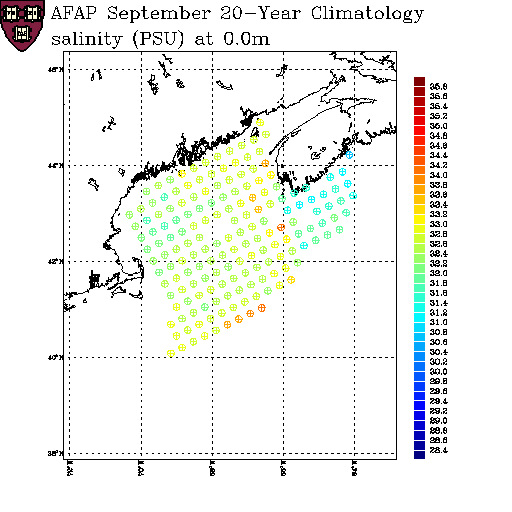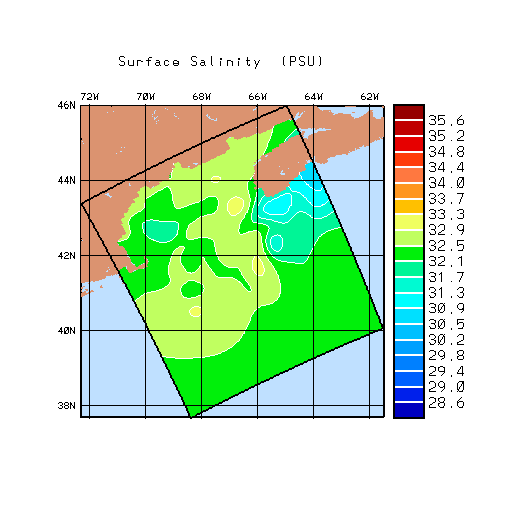



| Back | Home |
| Original Bub Climatology |
 |
| Restricted Bub Climatology |
 |
| Climatology OA |
 |
| Climatology OA + MCC |
 |
Climatology Estimate
The creation of a synoptic scale estimate of the shelf conditions starts with the most appropriate climatology. In this case, a ¼° climatology created by Frank Bub using the HydroBase software.
Since the climatology was to be used as the shelf input to the shelf/slope front feature model, the data values had to be kept distinct from the data values used for the slope analysis. Therefore the following restrictions were imposed on the Bub climatology:
The restricted profiles were then analyzed using the HOPS objective analysis package. This package uses a 2-stage analysis with an analytic correlation function. The correlation parameters for the first stage (large scale) analysis were 90km decay, 225km zero crossing and 10000day temporal decay. For the second stage (synoptic scale): 37.5km decay, 96km zero crossing and 1day temporal decay. A dynamic height is computed from the mapped T and S using a level of no motion of 160m.
Adding a Maine Coastal Current
To ensure that a Maine Coastal Current structure would be present in the initialization, a simple procedure was devised to modify the objective analysis fields.
This procedure specifies the offshore structure of the MCC while retaining the alongshore structure of the original OA field. To fix the width and gradients for the MCC, a set of sections from the June 2001 ECOHAB survey were used. From these the following were values chosen:
Given the relative variabilities in the temperature and salinity fields and the relative sizes of the imposed constant gradients, the changes due to the MCC feature model are much more readily visible in the salinity field than the temperature field.